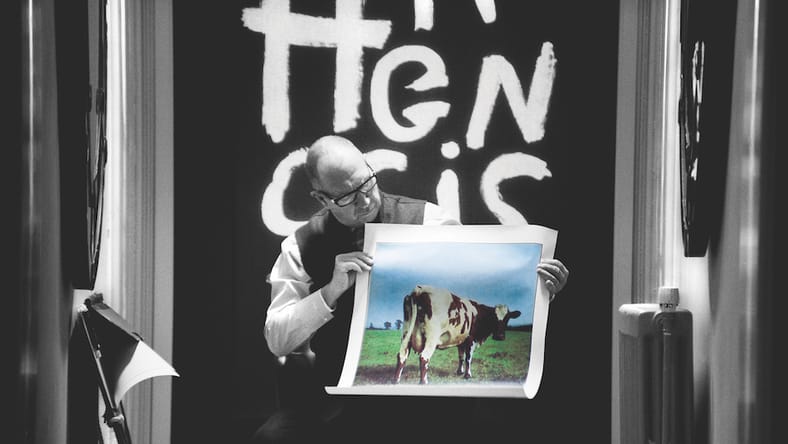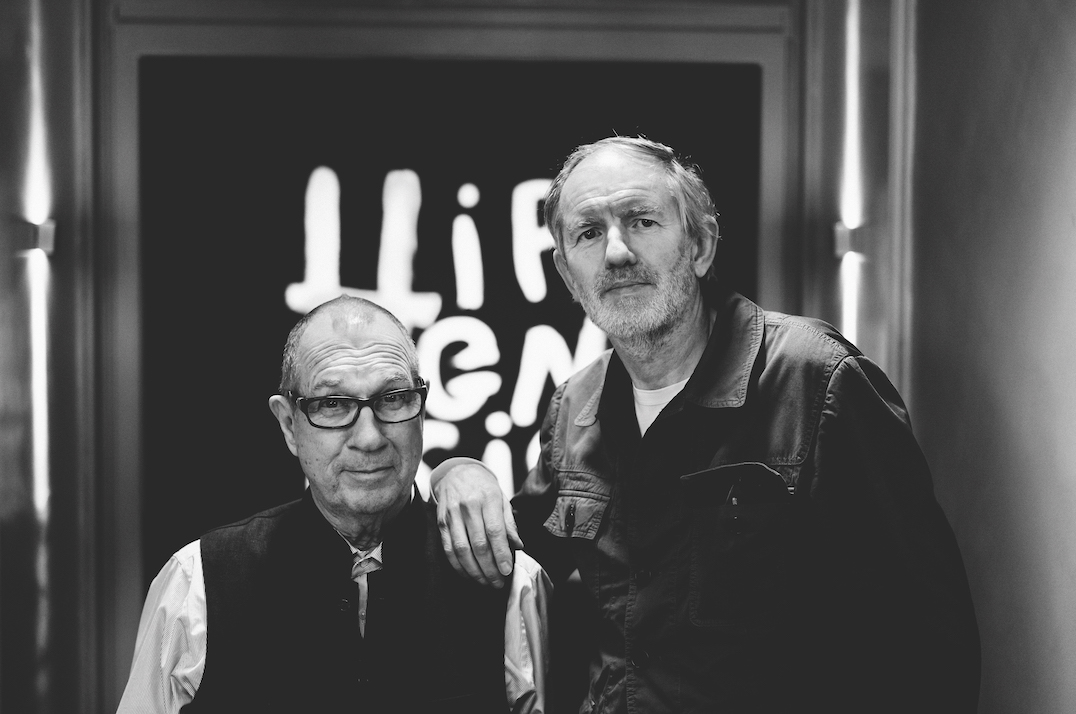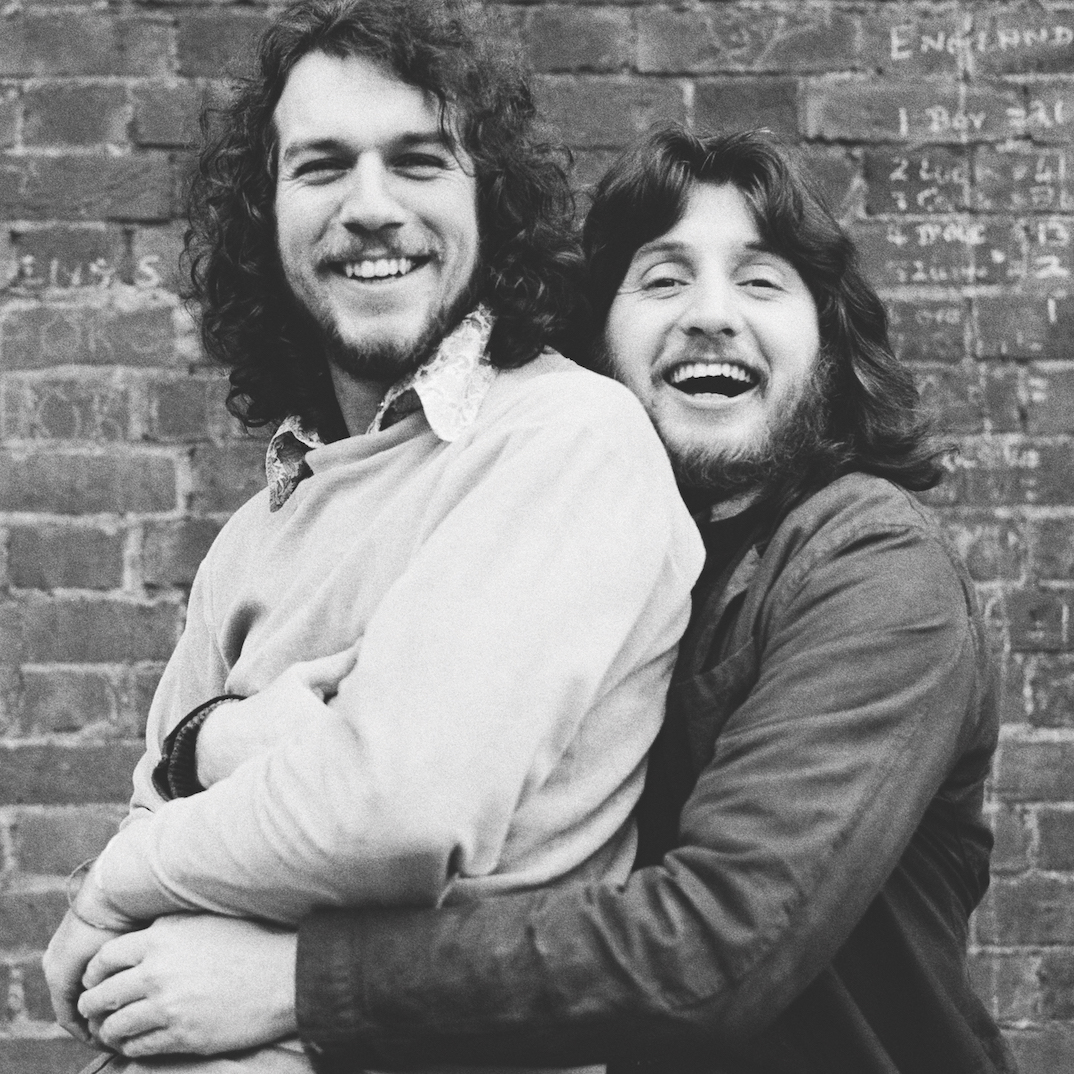
Let’s say you haven’t seen an Anton Corbijn films — from the brilliant Control, about the tragic post-punk band Joy Division, to the new Squaring the Circle (The Story of Hipgnosis), about the British creative team behind some of the most iconic album covers of all time. If you were fortunate enough to grow up in the height of the music-video era, you still know his work.
Beginning in the 1980s, the Dutch filmmaker has lensed coolly striking videos for everyone from Depeche Mode to U2 to Nirvana to Metallica to the Red Hot Chili Peppers to Arcade Fire. His latest Depeche Mode video, released earlier this year for the song “Ghosts Again,” pays homage to Ingmar Bergman’s 1957 masterpiece The Seventh Seal.
Corbijn is also an accomplished portrait and album photographer whose relationship with Joy Division included a train station black-and-white photo shoot of the mesmerizing British group soon after the release of their 1979 album Unknown Pleasures and before the 1980 suicide of lead singer Ian Curtis. In the most famous photo, the other members of the band (who would later go on to create New Order) walk with their backs to the camera as Curtis, his eyes masked in shadow, glances back at Corbijn.
Also Read: Jules Director Marc Turtletaub on How a Little Blue Alien Can Be a Mirror for the Human Experience
Corbijn would later create a run of starkly gorgeous album covers, including for U2’s The Joshua Tree and Depeche Mode’s Violator. And he has has expanded far beyond his musical roots with films such as the 2010 George Clooney action thriller The American, the 2014 John le Carré adaptation A Most Wanted Man (the final Philip Seymour Hoffman film to premiere before his death), and 2015’s Life, about the relationship between James Dean (Dane DeHaan) and Life magazine photographer Dennis Stock (Robert Pattinson).

Corbijn’s next film, Switzerland, is another thriller, starring Helen Mirren as The Talented Mr. Ripley author Patricia Highsmith.
Squaring the Circle, released in theaters in June and now available on demand, is Corbijn’s first documentary. It looks at how the Hipgnosis duo of Storm Thorgerson and Aubrey Powell — who later brought Peter Christopherson into the fold — created unforgettable album covers like Led Zeppelin’s Houses of the Holy and Pink Floyd’s Dark Side of the Moon, both of which were released in March 1973, two months before Corbijn turned 18.
His career as a music photographer had already begun. He would watch from a distance as Hipgnosis created album images for the likes of Paul McCartney, Peter Gabriel, and countless others.
Corbijn makes masterful use of black and white in Squaring the Circle, both to match archival footage and create a sense of timelessness. Dashes of color are reserved for the album images — like the cow on the sleeve of Pink Floyd’s 1970 Atom Heart Mother. The effect makes the covers pop, just as they must have for fans when they first appeared in record stores, standing out from the staid black-turtleneck-portrait covers of the past. Here’s our talk with Corbijn about Squaring the Circle.
TIM MOLLOY: Maybe we can talk about black and white as a way into Squaring the Circle?
ANTON CORBIJN: Maybe. Most of your things get so defined by your inability to do anything else. What people call your style is because you can’t do it any other way. You find for yourself a way to do it. And the same for black and white: I could not develop color myself, and black and white, I could.
And then I found it a more interesting medium than color, in the end — for me, at least. If I take a picture in color, I never know what it looks like. If I take a picture in black and white, I know exactly what it’s gonna look like. It’s a translation, of course, of reality, but one that I really like. … I do like other people’s color, but not so much my own.
Anton Corbijn on His Early Career
TIM MOLLOY: You got your start at a concert for the Dutch band Solution in the northern Netherlands city of Groningen. What do you remember about it?
ANTON CORBIJN:There was an open- air thing at the town square. I was 17. And we had just moved in during the school holiday, so I didn’t know anybody yet. And I was very shy in those days, and I thought, I’ll take my father’s camera and it will feel like I’m not alone somehow. Music had been my main love. I decided to take a few pictures while I was there.
I sent them to a magazine, they published three of them, and I thought, well, that’s it: I was going to be part of the music world. This was my chance. So initially, I was just a fan who took pictures of people on stage, and then it developed into portraiture.

Under Hipgnosis
TIM MOLLOY: I associate you so much with post-punk and Joy Division. As a teenager, did you like the artists Hipgnosis was working with, like Pink Floyd and Led Zeppelin and Paul McCartney and his band Wings?
ANTON CORBIJN: I liked the Beatles a lot and I liked Wings. But you know, the Hipgnosis guys were older than me. So it was more their world than mine. But Pink Floyd, I liked some stuff. Led Zeppelin, I definitely liked some stuff. But I was too young to photograph them. I didn’t have any connections. I was a small photographer still at school in the early ‘70s in the north of Holland. So I was not able to go to England to photograph people. Nor did I realize that was a possibility at the time.
But those sleeves — I remember a lot of those sleeves. Even if I didn’t have them all, you would always go to the record shop and look at things. It was a different world back then. I started doing sleeves in the late ’70s, but it was more people using my photographs on the sleeve, rather than me making sleeves. That didn’t happen until much later. Hipgnosis, of course, was very enviable because they designed all the sleeves as well. They had an idea, photographed it and executed it. I was way behind on that.
TIM MOLLOY: Did you think of Hipgnosis as rivals?
ANTON CORBIJN: No, we were not in the same league. I was just doing little album sleeves in Holland.
TIM MOLLOY: By the time you started making music videos, of course you knew how to develop film, you knew how to work with color. You were very good at it. Why did you stick with black and white?
ANTON CORBIJN:I felt it worked for me. I felt that I could express myself more in black and white. And you know, I don’t think I was too optimistic as a teenager. So black and white suited my mood. And as it happened, it also suited the mood of the musicians at the time — late ’70s, early ’80s. And then of course annoying bands like Depeche Mode came around and they were very colorful. [Laughs.] I made them black and white years later.
TIM MOLLOY: You found them annoying initially because they were, initially, poppy?
ANTON CORBIJN:Absolutely, yes. I just met with Martin Gore from Depeche, and I laughed about how I had found them too poppy. And Martin said yeah, I also found us too poppy at the time.
TIM MOLLOY: I love your 1990 video for Depeche Mode’s “Policy of Truth” that starts in black and white, and then you add these splashes of color that are really vibrant, almost like Giallo colors. How did you decide to do that?
ANTON CORBIJN:I cannot recall at all why I did certain things. Maybe at the same time I did something for Front 242 that was also very colorful, and I think that I was slightly inspired by Lars von Trier. He did a film with a lot of orange in it. [Editor’s note: von Trier’s 1984 feature debut, Element of Crime, is notable for its orange hue.]
TIM MOLLOY: When you made the Joy Division story Control in 2007, you decided to use black and white again. Why did that make sense at the time?
ANTON CORBIJN: The way I think of Joy Division is in black and white. When I moved to England in the late ’70s, I found it such a depressing place, actually. I would go on the train to all these cities in England to do pictures. And you’d always see the back of the houses in the towns and it was really depressing.
And in the old days, as a photographer, you had to choose whether to use color film or black-and-white film when you shot something. And the magazines that published things about Joy Division were black-and-white magazines printed on paper, because Joy Division didn’t have a hit. [When you had a hit] you would cross into another type of magazine that would be in color.
So almost all the pictures of Joy Division you see are in black and white because that was the only way to sell your pictures. So I guess that’s why I made the movie in black or white, because I used to remember that period as being black and white. My own pictures of Joy Division were in black and white.
TIM MOLLOY: Then when you started making feature films outside of the musical space, you went into color.
ANTON CORBIJN: Well, first, the second film I did was The American. … I never thought I could make a film. I didn’t believe that I had it in me, for several reasons. But when I then got approached by a lot of people and finally got an agent, I decided that if I was going to do a film, I wanted to see whether Control was just a lucky shot, or whether I actually understood something about filmmaking.
And I thought, I have to do everything the opposite of Control — so I did it in color, I did it with non-English actors, I did a fictional story. And then of course, it was an American studio, rather than independent and English… just to learn something from that process, and to prove myself, I guess, to myself.
Squaring the Circle and the Power of Black and White
TIM MOLLOY: Then with Squaring the Circle, you decided to go back to black and white.
ANTON CORBIJN:Because it’s a documentary, you need to use a lot of footage that you have no say in, that you didn’t make yourself. It’s all found footage. It’s just a mishmash of stuff.
And I also wanted the record sleeves to stand out. If you create a black-and-white world, and the record sleeves are like a colorful thing that you got into your life, that might work. … I wanted to show that excitement that album sleeves had on you when you were young — when an album came out of your favorite band, or you’d go to the record store and look at things.
TIM MOLLOY: There’s a shot that I think you like to do a lot, in which someone is carrying something, often seen from behind. I’m thinking of the video for Joy Division’s “Atmosphere,” with people in black and white carrying a picture of Ian Curtis. And Ian Curtis in Control, wearing a jacket with the word “hate,” as if he’s carrying hate. And Depeche Mode’s Dave Gahan carrying a chair in the video for “Enjoy the Silence.” And then Squaring the Circle starts with Aubrey Powell carrying all the Hipgnosis album covers.
ANTON CORBIJN:I felt that was his past, you know? The weight of the past on the shoulders.
TIM MOLLOY: Why is that shot so meaningful to you? Because you’ve used it a lot, and I love it every time.
ANTON CORBIJN:There’s always been a reason, every time I do it. In the photo of Joy Division, where Ian looks back as the others look away, that was my idea of translating the album sleeve into a visual. Their album was called Unknown Pleasures, so there were people walking away, like on a trip to unknown places.
I used their own bodies to visualize their music. And I don’t think that was how people in England photographed. … Nobody wanted to publish that picture until Ian died, which was really interesting. They looked at photography very differently in England, I thought at the time, and still do. I mean, I have big museum shows in Europe, but in England, never, because they think it’s rock photography. And I think it’s portraiture.
Squaring the Circle is now available on VOD.
Main image: Aubrey Powell in Squaring the Circle (The Story of Hipgnosis), directed by Anton Corbijn.
Share:

